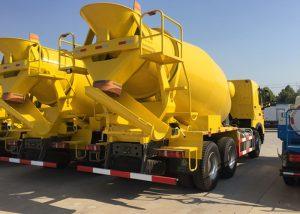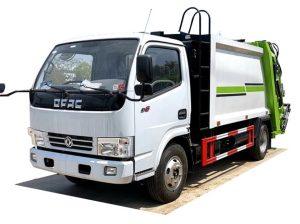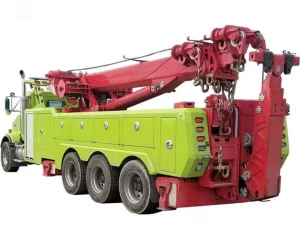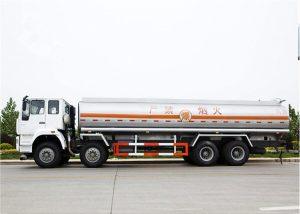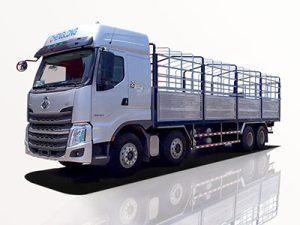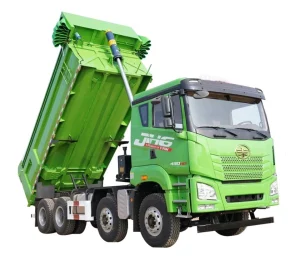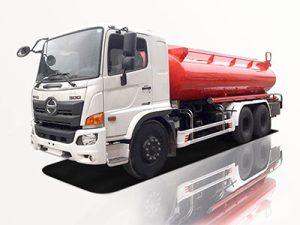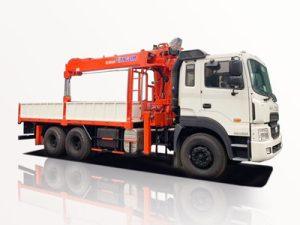Monday to Saturday - 8:00 -17:30
Exploring the Iconic 1950’s Milk Truck: A Nostalgic Journey
The 1950s was a pivotal decade in American history, characterized by rapid industrial growth, cultural shifts, and unique automotive innovations. One of the notable vehicle types from this era is the milk truck. These trucks were not only essential for delivering fresh milk to homes but also became an integral part of the community fabric. This article delves into the history, design, functionality, and significance of the 1950’s milk truck, examining why it remains a beloved icon of Americana.
1. The Historical Context of 1950’s Milk Trucks
To understand the milk truck of the 1950s, we must explore the social and economic landscape of the time. Following World War II, America experienced a boom in population and suburban growth, leading to an increased demand for food supply chains.
1.1 Post-War Economic Boom
The economic conditions after the war led to a rise in consumer spending. Families moved to suburbs, and the demand for fresh milk delivery became essential for many households. The milk truck evolved to meet this demand efficiently, marking the transition from traditional delivery methods.
1.2 The Rise of Home Delivery Services
Home delivery services became popular in the 1950s, with milkmen serving communities. These trucks were specifically designed for easy loading and unloading of milk crates, often featuring refrigerated compartments to keep the milk fresh.
2. Design Features of 1950’s Milk Trucks
The 1950’s milk trucks were recognizable for their unique and functional design. Several manufacturers produced these vehicles, each offering distinctive features tailored to the needs of milk delivery.
2.1 Common Styles and Models
| Model | Description | Manufacturer |
|---|---|---|
| Chevrolet Panel Truck | Classic panel design ideal for delivery | Chevrolet |
| Dodge Milk Truck | Known for durability and ample cargo space | Dodge |
| International Harvester Metro | Distinctively styled with curved bodywork | International Harvester |
2.2 Refrigeration Technology
One of the key innovations of 1950’s milk trucks was the introduction of refrigerated compartments. These systems ensured that milk stayed fresh during transportation, catering to the standards of quality and safety that customers demanded.
2.3 Customization Options
Many milk trucks were customized with branding and colors that represented the dairy farms they served. This branding created strong community connections and made the milkman a recognizable figure in neighborhoods.
3. The Role of Milk Trucks in Communities
Milk trucks were more than just delivery vehicles; they created a sense of community and served as a vital service for many families.
3.1 Building Community Connections
The presence of a milkman fostered daily interactions within neighborhoods. Milk delivery allowed community members to engage with one another, enhancing social cohesion.
3.2 Convenience and Accessibility
1950’s milk trucks made dairy products accessible to families who may not have been able to travel to grocery stores regularly. This convenience was especially valuable for families with young children or elderly members.
4. The Decline of Milk Delivery Services
Despite their importance, the prevalence of milk trucks began to wane in the latter half of the 20th century.
4.1 Changing Consumer Habits
As supermarket chains expanded, consumers shifted towards purchasing milk from grocery stores instead of relying on home delivery services. This change signified the beginning of the end for the classic milk truck.
4.2 Advancements in Transportation
The transport and storage of milk improved with technological advancements, allowing for more cost-effective solutions that contributed to the decline of the traditional milkman.
5. The Legacy of 1950’s Milk Trucks
The milk truck from the 1950s has left a lasting legacy that transcends its functional role in society.
5.1 Collectors and Enthusiasts
Today, vintage milk trucks are cherished by collectors and enthusiasts, often restored to their former glory. Classic car shows frequently feature these vehicles, celebrating their unique designs and cultural significance.
5.2 Milk Truck Reimagined
Modern businesses have creatively reimagined the milk truck concept. For instance, food trucks and mobile coffee vendors have adopted similar delivery styles to cater to contemporary consumer preferences.
6. Practical Tips for Collecting 1950’s Milk Trucks
If you are interested in collecting or restoring a 1950’s milk truck, here are some practical tips:
6.1 Research Models and Values
Before starting your search, familiarize yourself with different models and their market values. Resources like online forums, collector magazines, and car shows can provide valuable information.
6.2 Finding Parts and Restoration Services
Finding original parts for restoration can be challenging. Join enthusiast groups online, attend swap meets, and consider reaching out to specialized restoration shops to source necessary components.
6.3 Networking with Other Collectors
Building relationships with other collectors can offer insights and potential opportunities to buy or sell vehicles, as well as learn restoration techniques.
7. Famous 1950’s Milk Truck Models
Several models stand out as iconic representations of the 1950s milk truck industry, each with their unique features.
7.1 The Chevrolet 3100
A popular model among milkmen, the Chevrolet 3100 featured a sturdy build and reliable engine, making it a workhorse for many delivery routes.
7.2 The Dodge Power Wagon
Known for its robustness, the Dodge Power Wagon was frequently used in rural deliveries. Its rugged design made it ideal for transporting milk in challenging terrains.
7.3 The International Harvester KB Series
This model was appreciated for its spacious cargo area and innovative design, helping milkmen deliver products efficiently.
8. Maintenance Tips for Vintage Milk Trucks
Owning a vintage milk truck comes with unique maintenance challenges. Here are practical maintenance tips to keep your vehicle in good shape:
8.1 Regular Inspections
Consistent inspections of the engine, brakes, and tires are crucial. Older models may require more frequent checks than modern vehicles.
8.2 Proper Storage
Store your truck in a climate-controlled environment to prevent rust and other deterioration caused by environmental factors.
8.3 Documentation and History
Keep documentation of your truck’s history and repairs. This record is beneficial for future restorations and can significantly enhance its value.
9. Frequently Asked Questions (FAQs)
9.1 What were milk trucks primarily used for in the 1950s?
Milk trucks were primarily used for delivering fresh milk and dairy products directly to homes, providing a vital service within communities.
9.2 How did refrigeration technology impact milk delivery?
The introduction of refrigerated compartments kept milk fresh during transport, ensuring higher quality and safety for consumers.
9.3 Are 1950’s milk trucks collectible today?
Yes, many collectors seek out 1950’s milk trucks for restoration and display due to their nostalgic value and historical significance.
9.4 What was the average price of a gallon of milk delivered in the 1950s?
In the 1950s, the average price of a gallon of milk delivered to homes was around 90 cents, reflecting the economic conditions of the time.
9.5 How can I start collecting vintage milk trucks?
Begin by researching different models, network with other collectors, and attend classic car shows to find trucks for sale.
9.6 What modern vehicles resemble vintage milk trucks?
Modern food trucks and mobile vendors often utilize styles reminiscent of vintage milk trucks to create a nostalgic appeal for customers.


